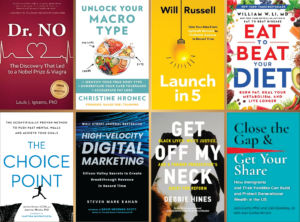Now Read This! A Brief History of Book Bans and Why They Historically Fail

Share
If recent news about schools banning books has you concerned, read this article and get a brief history of book bans and why they historically fail.
For a country that venerates its citizens right to free speech, the U.S. tends to ban a lot of books. The most recent surge began in the fall of 2021. In October, a Texan State Legislator introduced a bill that called for the school district to review a list of 850 books that might make kids “uncomfortable” or feel “guilty.” Hundreds of titles were removed. Every Republican-controlled state is considering at least one such law.
Even more recently, in January 2022, a school board in Tennessee banned Maus, a Pulitzer Prize winning graphic novel that depicts the Holocaust, for swear words and “disturbing imagery.”
“But you know what? It’s disturbing history!” said its author, Art Spiegelman.
A Brief History of Book Bans in The U.S.
Book bans are a long-held tradition in the land of the free. In 1873, the “Comstock Law,” named for US Postal Inspector Anthony Comstock, forbid mailing materials that were “lewd, indecent, filthy, or obscene.” The U.S. Post Office estimates that this law led to the confiscation of 120 tons of printed work. The government prosecuted 3,5000 people under this law and convicted 350. The books targeted included titles by Ernest Hemingway, F. Scott Fitzgerald, and John Steinbeck.
From there, book bans continued, and eventually worsened. Some of the most challenged books sit among today’s most venerated classics, such as Animal Farm (1945), Catcher in the Rye (1951), Grapes of Wrath (1939), and Of Mice and Men (1937).
In 1975, a book banning case went to the Supreme Court. The Pico case came about thanks to Steven Pico, a 17-year-old student who opposed his school board “unofficially” removing “objectionable” books from school libraries. The Court ultimately ruled that the Board’s removal of certain books, based on school board members’, opinions violated the First Amendment.
Book Challenges on the Rise
Book challenges have been slowly but steadily rising over the past decade. In 2015 there were 275 challenges recorded by the American Library Association. In 2017, there were 354. In 2019, 377.
Solely between September and November of 2021, there were 330 challenges.
But perhaps the most terrifying aspect of book banning is this: it’s estimated that between 82% and 97% of challenges go unreported. This is called “stealth censorship” – books quietly falling off the shelves with no one around to hear them fall, or report them in the proper channels. That means for every book challenge reported, 4 or 5 go unreported.
Party Politics
Prior to 1999, the majority of censored books were banned due to sexual content or obscene language. But the type of books targeted in the past few years represents an escalation. And it’s tied directly to party politics. Now, books are being thrown off shelves for containing material on critical race theory, LGBTQ+ identities, and sex.
In 2020, the two most challenged books were Melissa (formerly published as George), a book by Alex Gino about a transgender child struggling with her identity, and Stamped: Racism, Antiracism, and You, by Ibram X. Kendi, reportedly targeted for its public statements and “selective storytelling incidents.”
However, the knife cuts both ways. Liberal organizations also have participated in book bans. To Kill a Mockingbird and Of Mice and Men, both targeted due to racial slurs and white savior characters.
Dangers of Banning Books
To ban books from libraries, particularly school libraries, is a threat to a free society. But this new wave represents a special threat. The aim is to ban books that encourage young people to consider different perspectives. It disrupts the very purpose of books. Books challenge the status quo and encourage people to expand their world views. If we cut off access to books that push the boundaries of our beliefs, it would halt the advancement of humanity.
Stealth censorship is particularly frightening, because it happens without anyone taking note. The ALA says that only about 10% of books that are challenged are actually removed from the shelves, and that’s thanks to the students, librarians, and other book warriors who won’t let books go without a fight. But what happens to the ones that sneaky censors pull off shelves behind everyone’s backs?
Book Bans Backfire
The good news is book banning has never been effective. To the contrary, when schools ban books from a classroom or library, the curious nature of students takes over and book sales in the community skyrocket. Students (and often their parents) want to know why their school banned these books. And this shows no sign of changing. Authors, teachers, and students all over the country continue to fight book challenges.
The Bottom Line is This
Book bans backfire. Banning books never dampens reader interest or makes the books go away. It only ignites our intellectual curiosity. As long as books exist that challenge and confront us, humans will find a way to read them.



